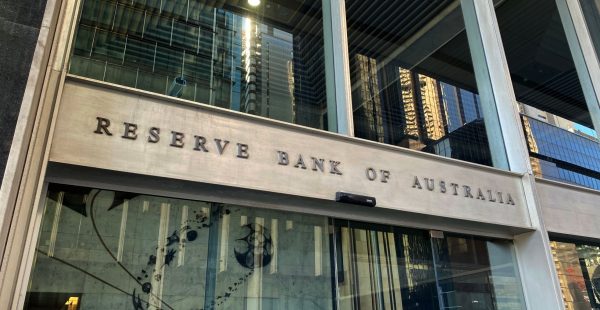What can investors fill the impending hybrid market “void” with?

As higher-income investors begin to prepare for the phase-out of Australia’s hybrid market announced by the Australian Prudential Regulation Authority (APRA) last year, new market commentary has offered some alternative options to fill the eventual “void”.
Portfolio Manager Shan Kwee and Credit Analyst Dinesh Kuhadas from Janus Henderson Investors’ Australian Fixed Interest team said while hybrids have become a “comfortable place” for investors to retain exposure to household names with unique benefits, their structure has also been viewed as quite complex and risky for certain investors.
According to announcements made by APRA last year, bank hybrids are to be completely phased out by 2032 and changes to the capital framework are currently being finalised to come into effect from 1 January 2027.
Kwee and Kuhadas said these changes have set a chain reaction in motion which requires banks to prepare by recalling their additional tier 1 capital (AT1) instruments and replacing them with Tier 2 capital securities (hybrids with a maturity date).
“While APRA has provided an avenue for banks to roll over their existing hybrids under certain conditions, we anticipate most banks will begin immediately replacing hybrids at their call dates with Tier 2 where they have capacity to do so,” they said.
“Most of the banks have sufficient buffers in their Tier 1 capital to handle the reduction in hybrids through to 2027. The insurance sector meanwhile will still be able to issue AT1 instruments, including the likes of Challenger, IAG, QBE and Suncorp Group.
“We expect the main consequence of the regulatory changes will be increased levels of Tier 2 to replace hybrids, while four major Australian banks, along with Macquarie, will be required to have a small additional amount of common equity capital. This provides a full year in 2026 after the finalisation of the new framework for banks to adjust ahead of the 1 January 2027 implementation date.
“Bank treasurers have indicated they are unlikely to refinance or issue any new hybrids. It is far quicker, easier and cheaper for them to issue Tier 2, as opposed to the documentation and month-long book build process to issue a listed hybrid. This has implicitly built in a scarcity premium into listed hybrid market pricing in recent months and has effectively eliminated extension risk post their first call dates.
“The total Tier 1 capital that banks will carry under the new proposal will be lower. This has implications for credit rating agencies and may lower the credit profiles of some Australian Banks when viewed in a global context.”
Kwee and Kuhadas also noted several other income investment opportunities that may arise to fill the $47 billion void to eventually be left behind by the hybrid market, including corporate subordinated debt, foreign bank AT1 and listed structures.
“For income investors in Australia, 2024 will likely be remembered as the year in which APRA announced it would give Australian hybrids the long kiss goodnight. Since that announcement, enthusiastic market pricing has brought forward the risk of underperformance for those remaining hybrid holders,” they said.
“As such, as we begin 2025, we believe investors may wish to assess other income-generating credit opportunities outside of the hybrid space to complement their investment portfolios.
“We have seen a recent resurgence of corporate subdebt that has been issued by entities such as Scentre Group, Ampol and Pacific National. We also have expectations that with the national build out of renewable energy infrastructure and transmission networks, utility companies will also look at this form of capital for ratings support during their decade long development phase. These securities come in different call/maturity structures and may or may not include equity conversion. Each note should be assessed on its own merits which complicates matters for investors.
“A number of global institutions issue AT1/Contingent Convertible notes (CoCos) and we are able to access such instruments across various currencies and markets. Several, like UBS and BNP have also issued AT1 bonds in Australian dollars. During our meetings with top tier global institutions, we continue to encourage them to consider expanding their bank capital issuance programmes to include Australian dollar denominated securities.
“There are also emerging types of global capital structures which exhibit some characteristics of hybrids including Limited Recourse Capital Notes (LRCNs), and we are monitoring the development of these innovative structures for suitability for domestic income investors.
“Those investors who prefer investing via listed instruments may find an increase in the number of Listed Investment Trust (LITs) or Exchange Traded Funds (ETFs) available in future, in order to cater to former hybrid investors.
“Plenty of investment choices exist across public markets like corporate investment grade, high yield, asset backed, emerging market debt, and Collateralised Loan Obligations (CLOs), as well as the semi-private syndicated loan markets, and finally private credit markets including direct lending and securitisation warehousing.
“Each investment type has its own nuances and risks associated with the pursuit of higher levels of income. And while they have delivered well for professional investors over the decades, some have been difficult to access by end investors. There are a number of funds with solid longer-term track records available to fill investors income needs in a post hybrid world. Some are specialised single credit capabilities which target one area of the broader credit market.”











Deliberate adviser blocking tactics by union super funds. Some are OK, such as ART and and Aware. But Australian Super…
Of course the SMC supports ASIC’s IDR naming and shaming proposal—this is entirely in line with its broader strategic playbook.…
Has anyone noticed that most platforms try to classify complaints as feedback instead of complaints nowadays? Even when you stipulate…
No this would be analogous with Industry Funds being named and shamed for individual breaches and incidents in IDRs and…
ASIC & Industry Super Fund audits done in member paid for Sporting boxes whilst enjoying free food and alcohol. All…